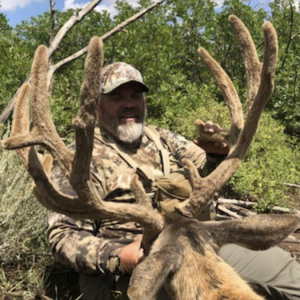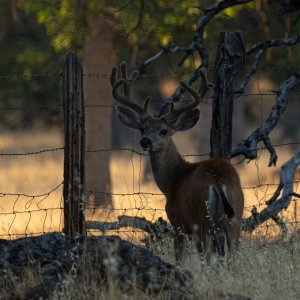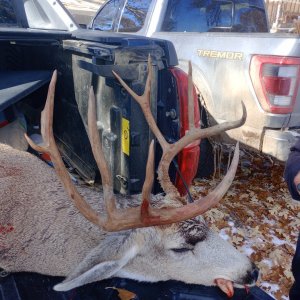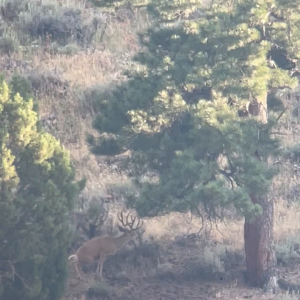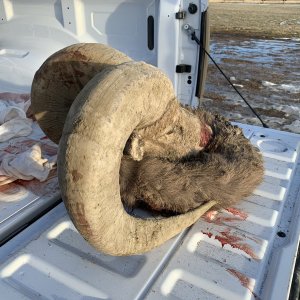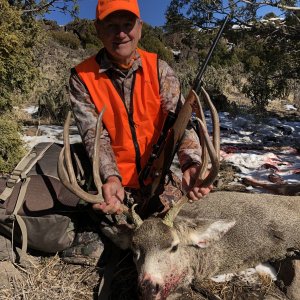OutdoorWriter
Long Time Member
- Messages
- 8,288
LAST EDITED ON Jun-08-13 AT 07:12AM (MST)[p]
Gray wolves, whose packs now prowl through the northern Rockies and the forests along the Great Lakes, no longer need endangered-species protection to prevent their extinction, the Obama administration said Friday.
The only wolf populations to have protection going forward would be Mexican wolves in southern Arizona and New Mexico.
The Fish and Wildlife Service unveiled a proposal to eliminate the remaining restrictions across the country, saying wolves are flourishing again. The only populations to have protection, under the proposal, would be Mexican wolves in southern Arizona and New Mexico and a small experimental population in North Carolina.
The announcement by Daniel M. Ashe, the director of the Fish and Wildlife Service, marked the imminent end of 50 years of controversial efforts to bring back a predator that once roamed the continent but had been all but exterminated in the United States by the mid-20th century.
?Wolves are recovered and they are now in good hands,? Mr. Ashe told reporters on a conference call. ?States are the most competent people to make the decisions in the future about how many wolves? there should be and ?where wolves can add value to the landscape in the years ahead,? he said.
States like California, Colorado and Utah have few, if any, packs now. It is unclear, if the proposal is made final, whether migrating wolves from the Rockies could flourish there.
Environmental groups were quick to criticize the decision, saying that it reflected a parsimonious view of the Endangered Species Act and would hinder the further expansion of the wolves? current range. Protections have already been lifted for the largest populations of wolves in the Midwest and northern Rockies.
Kieran Suckling, the president of the Arizona-based Center for Biological Diversity, said, ?What this is really about is the agency saying: We?re closing the door on the recovery of wolves, new wolf populations in new areas. We?re going to be satisfied with a northern Rockies population, a Great Lakes population and a Southwest population.?
The protections available for wolf populations in the northern Midwest have been largely uncontroversial, as was the removal of these populations from the endangered species list in 2011. But in Montana and Idaho, where wolves were reintroduced a generation ago, they were a magnet for bitter controversy, pitting ranchers and hunters against groups dedicated to helping transplanted populations thrive.
Gray wolves in Wyoming had some protections until last year.
The most obvious result of the loss of protections was state-authorized wolf hunts. Because some of the wolves hunted and killed were favorites of tourists in Yellowstone National Park or collared animals being tracked by wildlife biologists, the news of their deaths left raw emotions among conservation advocates.
Friday?s announcement of the proposal to leave management of wolves to state wildlife officials was expected; a version of the proposal had been reported by The Los Angeles Times. But that did not make it any more palatable to environmental groups.
?This proposal is really an unfortunate low bar for endangered-species recovery in the United States,? said Jamie Rappaport Clark, the president of Defenders of Wildlife. ?I'm not saying we have to restore them to their whole historic range, but this cuts off wolf recovery in the middle of the movie.?
?We didn't do this with bald eagles,? she added. ?Grizzlies and wolves, the top predators, need the cover of the law. The social tolerance for predators in the West is very low. There is concern that states will follow the race to the bottom. We?re talking about a predator that people are very emotional about to begin with.?
Mr. Ashe, in his news conference, said, ?The recovery of the gray wolf is one of the most remarkable successes in the history of conservation. He stoutly defended the state agencies, saying: ?We need to be dependent on the states to carry out wildlife management on a broad scale. And states are very competent to do that.?
Ron Aasheim, a spokesman for Montana?s Department of Fish, Wildlife and Parks, said that after three hunting seasons, the most recent of which ended with 225 dead wolves, ?the population remains robust and very healthy.? He added that the packs are spreading ?in every direction.?
But Mr. Suckling does not share the optimism. ?There are large areas of big wild habitats outside those three locations that could and should have wolf populations in them, and the Fish and Wildlife Service is closing that opportunity,? he said.
?That on one hand is really bad news for wolf recovery because it sets a low standard. And that is really bad news for those ecosystems.?
TONY MANDILE

How To Hunt Coues Deer
Federal Protection of Gray Wolves May Be Lifted, Agency Says
By FELICITY BARRINGER
New York Times - Published: June 7, 2013
By FELICITY BARRINGER
New York Times - Published: June 7, 2013
Gray wolves, whose packs now prowl through the northern Rockies and the forests along the Great Lakes, no longer need endangered-species protection to prevent their extinction, the Obama administration said Friday.
The only wolf populations to have protection going forward would be Mexican wolves in southern Arizona and New Mexico.
The Fish and Wildlife Service unveiled a proposal to eliminate the remaining restrictions across the country, saying wolves are flourishing again. The only populations to have protection, under the proposal, would be Mexican wolves in southern Arizona and New Mexico and a small experimental population in North Carolina.
The announcement by Daniel M. Ashe, the director of the Fish and Wildlife Service, marked the imminent end of 50 years of controversial efforts to bring back a predator that once roamed the continent but had been all but exterminated in the United States by the mid-20th century.
?Wolves are recovered and they are now in good hands,? Mr. Ashe told reporters on a conference call. ?States are the most competent people to make the decisions in the future about how many wolves? there should be and ?where wolves can add value to the landscape in the years ahead,? he said.
States like California, Colorado and Utah have few, if any, packs now. It is unclear, if the proposal is made final, whether migrating wolves from the Rockies could flourish there.
Environmental groups were quick to criticize the decision, saying that it reflected a parsimonious view of the Endangered Species Act and would hinder the further expansion of the wolves? current range. Protections have already been lifted for the largest populations of wolves in the Midwest and northern Rockies.
Kieran Suckling, the president of the Arizona-based Center for Biological Diversity, said, ?What this is really about is the agency saying: We?re closing the door on the recovery of wolves, new wolf populations in new areas. We?re going to be satisfied with a northern Rockies population, a Great Lakes population and a Southwest population.?
The protections available for wolf populations in the northern Midwest have been largely uncontroversial, as was the removal of these populations from the endangered species list in 2011. But in Montana and Idaho, where wolves were reintroduced a generation ago, they were a magnet for bitter controversy, pitting ranchers and hunters against groups dedicated to helping transplanted populations thrive.
Gray wolves in Wyoming had some protections until last year.
The most obvious result of the loss of protections was state-authorized wolf hunts. Because some of the wolves hunted and killed were favorites of tourists in Yellowstone National Park or collared animals being tracked by wildlife biologists, the news of their deaths left raw emotions among conservation advocates.
Friday?s announcement of the proposal to leave management of wolves to state wildlife officials was expected; a version of the proposal had been reported by The Los Angeles Times. But that did not make it any more palatable to environmental groups.
?This proposal is really an unfortunate low bar for endangered-species recovery in the United States,? said Jamie Rappaport Clark, the president of Defenders of Wildlife. ?I'm not saying we have to restore them to their whole historic range, but this cuts off wolf recovery in the middle of the movie.?
?We didn't do this with bald eagles,? she added. ?Grizzlies and wolves, the top predators, need the cover of the law. The social tolerance for predators in the West is very low. There is concern that states will follow the race to the bottom. We?re talking about a predator that people are very emotional about to begin with.?
Mr. Ashe, in his news conference, said, ?The recovery of the gray wolf is one of the most remarkable successes in the history of conservation. He stoutly defended the state agencies, saying: ?We need to be dependent on the states to carry out wildlife management on a broad scale. And states are very competent to do that.?
Ron Aasheim, a spokesman for Montana?s Department of Fish, Wildlife and Parks, said that after three hunting seasons, the most recent of which ended with 225 dead wolves, ?the population remains robust and very healthy.? He added that the packs are spreading ?in every direction.?
But Mr. Suckling does not share the optimism. ?There are large areas of big wild habitats outside those three locations that could and should have wolf populations in them, and the Fish and Wildlife Service is closing that opportunity,? he said.
?That on one hand is really bad news for wolf recovery because it sets a low standard. And that is really bad news for those ecosystems.?
TONY MANDILE

How To Hunt Coues Deer




